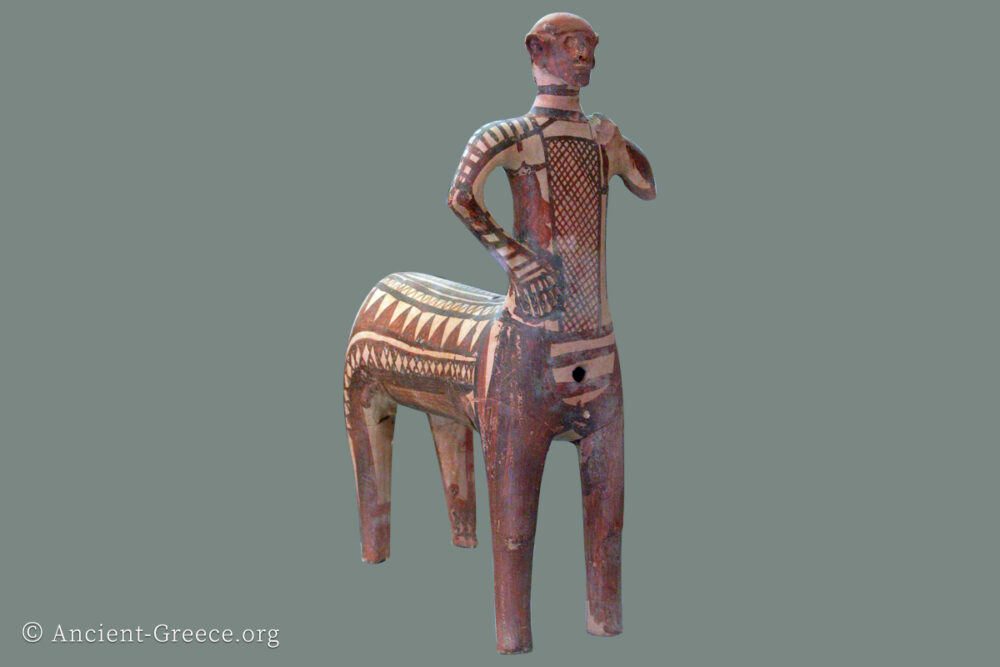
On this page:
Το Αρχαιολογικό Μουσείο Ερέτριας (Archaeological Museum of Eretria) Hosts important archaeological artifacts from excavations in ancient Eretria, Touba, Xiropoli of Lefkandi, and Amarynthos, in the island of Euboea, from the Copper Age to the Roman era.
The museum is located near the archaeological site of Eretria.
Artifact Photos
Top row, left to right:
- Late Protogeometric period. Made of clay. 1050 – 900 BCE.
The Centaur of Lefkandi was found in Toumba cemetery in two different pieces. The head was found among the offerings in grave T1, while the body was among the offerings in another grave (T3) three meters away.
The statuette has a deliberately painted nick on his right leg which can be perceived as a “wound” on its left knee. This has led to speculation that it might be a depiction of the famous Centaur Chiron who was wounded by Herakles with an arrow.
His right hand has six fingers. - The Centaur of Lefkandi, face detail.
- Theseus and Antiope statue fragments. Parian marble. Circa 520-500 BCE.
From the west pediment of the Apollo Daphnephoros temple. The complex depicts the abduction of the Amazon queen Atniope by Theseus. The twisting torsos are rare evidence of the evolution from the frontal and immobile Kouros and Kore of archaic sculpture to the more naturalistic poses of the classical era. From the pediment of the archaic temple of Apollo.
Compare with similar metope from the Athenian Treasury at Delphi.
Second row:
- Athena aegis with gorgoneion. Statue fragment from the west pediment of the Apollo Daphnephoros temple.
Parian marble. Circa 520-500 BCE. - Clay statuette of a horse with wheels and jugs.
- Stele fragment. Marble. 460 BCE.
The surviving lower relief of a funerary stele depicting the legs of a youth holding a javelin or spear. - Male torso statue fragment. Marble, 4th C. BCE.
- Glay Gorgon
- Clay Deamon Head
Third row:
- Marble Statuette
- Mycenaean vase depicting a bird and a cat (or lion) and a bird.
- Ceramic vase with geometric patterns.
- Ceramic vessel with spirals.
- Panathenaic Amphorae. 4th C. BCE.
These amphorae were brought back by a citizen of Eretria who won in the Panathenaic games. They belong to a group of nine similar vases that are exhibited at the Athens Archaeological Museum. - Red figure Lekythos.
Fourth row:
- Clay dolls with movable limbs.
- Bronze Figure
- Bronze Artifact
- Gold jewelry.
- Gold jewelry.
- Clay boat beplica.























